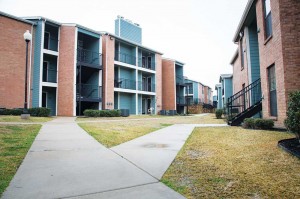The way Mike Daniel sees it, while he and his allies were helping people get out of public housing in terrible neighborhoods, the federal government was helping put three times as many people into those neighborhoods through the low-income housing tax credit program. It goes by the acronym of LIHTC, pronounced “lie-tech.”
The program was created as part of the Tax Reform Act of 1986. Since then more than 2.2 million housing units have been built “with, again, white [tenants] in middle-class neighborhoods and minorities in crappy neighborhoods,” Daniel said. “For every family we helped, they were putting three more in.”

Robert Garner
Some nonprofit organizations got into the tax-credit business with high ideals about community involvement and revitalizing deteriorating neighborhoods. “But that’s not really happening” in most cases, he said.
It took the banks only a few years, Daniel said, to convince Congress to remove pesky provisions of the law that could actually have made a positive difference. There isn’t even any language specifying that the tax-credit housing must comply with the Fair Housing Act, he said.
The big banks got into the program in a big way. In a recent two-year period, Wells Fargo, Bank of America, JPMorgan, and Citibank each invested $300 million in tax-credit housing. According to the lawsuit filing, LIHTC is the federal government’s largest program for developing affordable housing, costing the government $6.5 billion per year in forgone taxes.
Generally, Daniel and others said, the quality of the LIHTC housing being built has been good. “It’ll be very nice housing, usually fenced and gated,” with good security and maintenance, he said. But in addition to being in high-crime neighborhoods, the apartments or townhomes might be across the street from a hazardous-waste location, in neighborhoods where there are no grocery stores and few services, and where there may already be substantial numbers of public housing units
Previously almost all tax-credit units in Texas were being built in low-income neighborhoods, and thus people who needed help with housing had little choice. Some who had never lived in bad neighborhoods before were being forced to move there to take advantage of the tax-credit units’ rental rates, Daniel said.
“There are people who have never been in those areas [where the housing is located]. They live in Garland, and they don’t want to go to South Dallas,” Daniel said. “It’s not where they’re from, they hate it, and they have to go there.”
Researchers have found similar problems in other states. A 2013 study in and around New York City found that almost three-fourths of LIHTC affordable housing units were concentrated in areas of high or extreme poverty, while the majority of LIHTC housing for the elderly was in low-poverty suburban areas.
“This is a national problem,” said John Henneberger, co-director of the Texas Low Income Housing Information Service and a housing advocate since the mid-1970s. “What is at issue here is, literally, are we going to integrate people of color into the rest of society?”
Changing the policies that put almost all tax-credit housing in the same kind of neighborhoods “gets down to both an individual rights thing and a good public policy thing,” he said. “That’s what we’re really talking about — if you’re a low-income mom trying to raise some kids, are you going have any say over what kind of neighborhood your kids grow up in?”
Some states, he said, learned the lesson long ago of not crowding too much low-income housing together. “But here in the state of Texas, we were happily going along repeating [those] mistakes, right up until the ICP case was filed” against the state housing agency.
******











